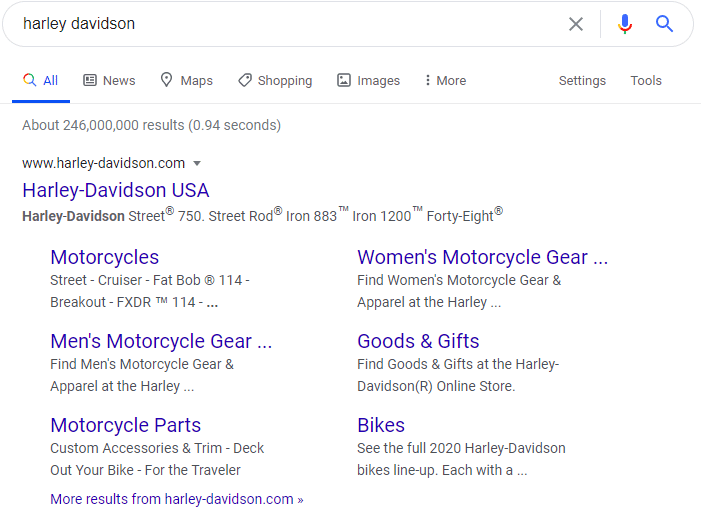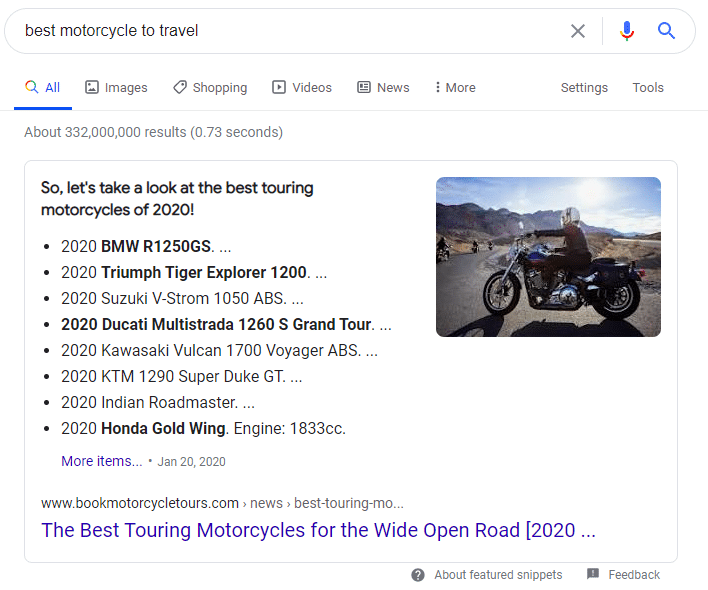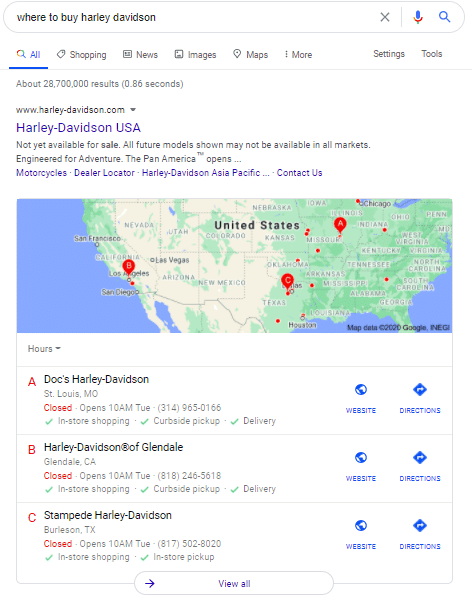Do you think that SEO is purely technical because it deals with bots, code, and algorithms?
This part of optimization is essential for ranking. But there is a more human and subjective stage that underlies the entire strategy: understanding people’s search intent.
Users go to Google because they want to find answers. So, all research carries the intention of solving a doubt.
However, these intentions are not always evident, as each person uses different words to try to find an answer.
That’s why one of the great efforts of search engines is to understand human language to unveil people’s search intent. With this understanding, robots can search the index for content that best meets users’ needs.
And that’s where the subjective part of your SEO and Content Marketing strategy comes in.
You also need to understand people’s search intent to deliver what they want to find so that Google recognizes that you have the best answers and deserve the best positions.
Do you want to understand what the search intent is and how to interpret users’ searches? In this article, we’ll talk about:
- What is search intent?
- How does search intent influence SEO?
- How to unveil the search intent behind a keyword?
- How to optimize content from the search intent?
- Final Words
Keep reading and learn how to create more efficient strategies with this knowledge!
What is search intent?
Search intent is what the user wants to find when using search engines.
A search for “yoga for beginners” brings with it the intention to find classes, tips, and postures for those who want to start practicing yoga.
They are not advanced tips or Muay Thai classes because that is not what the user is looking for.
That may seem obvious, but understanding what’s behind the search terms allows you to plan the content production that matches the buyer persona’s needs.
This understanding holds for Google and other Digital Marketing channels with a search engine, such as YouTube and social media. In all of them, the person types a keyword in the search bar, which intends to find answers to their questions and needs.
Search engines serve to resolve doubts about the prices of a product or the best restaurant nearby. Each survey brings with it the aim of finding some answer. In general, we can divide these intentions into three main types.
Navigational
The user already knows where they want to go but uses the search engine as a shortcut to get there. That happens, for example, when they type the name of a brand to reach its website.

Informational
The user wants to get information and learn about a subject. On a buying journey, this type of research takes place at the beginning, when the consumers are trying to understand their needs.

Transactional
Transactional research is directed towards conversion after the user has already asked for information to solve their needs.

How does search intent influence SEO?
In the examples above, you could see that Google offers results in different ways for each search.
That’s because the search engine strives to understand users’ search intent, not just the keywords they type.
Then, the search engine delivers responses with the content and format that are most relevant to users.
This effort by Google is evident in its algorithm updates. BERT was the last update in this sense, representing a significant evolution of the algorithm in the processing of natural language, understanding how humans express themselves.
From now on, it understands the meanings of words, the relationships between them, and the nuances of human language.
With this update, it’s clear that what matters to the search engine is not exactly the keywords that users use but the meaning that they build together. This sense is what evidences the users’ search intention.
You can consider this change from Google in your SEO strategies. After all, professionals in the field usually optimize content with keywords in mind.
The mission was to identify the words that people used to find certain content and know the ideal volume of repetition of those terms on the pages.
Thus, Google would match the user’s search with the content and prioritize that page in the ranking.
Notice how this approach leaves the user aside to focus on the robots. It turns out that Google doesn’t want that anymore.
If the search engine no longer attaches so much importance to the matching of keywords, but to the meaning they express, SEO’s focus must also change.
From now on, you must ask yourself what does this user wants to find when doing this search? People want answers, not keywords. So, you should meet the user’s needs, not the bots’.
This issue should guide your Content Marketing planning for SEO from keyword research and setting guidelines for content production.
[ion_script src=”https://ionfiles.scribblecdn.net/scripts/ionizer-1.4.3.min.js” hash=”eyJ1cmwiOiIvL2ludGVyYWN0aXZlLnJvY2tjb250ZW50LmNvbS9rZXl3b3JkLWludGVudD9faW9uX3RhcmdldD1lbWJlZC0xLjAiLCJpZCI6Il9pb25faW9uaXplcl8xNzE3NzYxMDM5NzU4IiwiZnVsbFNjcmVlbiI6ZmFsc2UsImxhenlMb2FkaW5nIjp0cnVlfQ==”]
How to unveil the search intent behind a keyword?
Keyword research is one fundamental SEO planning tool. This strategy step consists of identifying search terms with the potential to attract visitors and conversions to your site.
With these terms in hand, you can define the guidelines for producing content and use them throughout the pages.
Even with the shift in focus to search intentions, this tool remains relevant. But, now, it must go beyond a simple search for propitious terms.
For each keyword opportunity with the potential to generate results for your business, you must understand the intention behind it.
First, you can use your human ability to put yourself in a person’s shoes and try to understand what they would like to know.
After all, you are not a Google bot that needs a complex algorithm for this. Just use empathy!
But you can also understand the intentions by asking Google itself. Type in the search engine the keyword you are working on and observe the results. Google will show what it considers to be the best answers at the top of the page — that is, the ones that best serve the search intent.
Thus, these first results can be a guide for your content production. Understand the subjects they address, their content structure and format, and identify points for improvement that you can explore in your article.
Soon, your website will appear in those first positions!
How to optimize content from the search intent?
After the keyword research, you already have some potential terms in hand. So, it is time to develop and optimize the content.
Look at the terms’ intentions and goals that help achieve the funnel’s different stages.
Let’s say that many users come to your site looking for “Digital Marketing”. This term is quite broad and generic and tends to generate lots of traffic but not many conversions.
Probably, people doing web research have an informational intention and just wish to know more about the topic. They are still far from a conversion — that is, they are at the top of the funnel.
Although there is an intention, it is still unclear whether the person wants to know the concept of Digital Marketing, find courses on the topic or hire an agency.
What are you going to do? If your goal is to generate traffic (probably yes!), you must comply with this informational search intention with ample content, covering all possible doubts.
In this content, you could talk about Digital Marketing’s history, tools, courses, strategies, and other various topics within this topic that also generate traffic and interest.
For each more specific topic, you can create new articles, which will work as “satellite posts” that links to the “post pillar” — that most complete and comprehensive content.
That is how a topic cluster strategy works, which we use here on the Rock Content blog.
One of the satellite posts may be about “how to choose a digital marketing agency”.
It is a very specific keyword with transactional intent characteristics that demonstrates that the user is already closer to the bottom of the funnel.
The intent of the search is obvious. One wants to find guidelines and criteria to choose the best digital agency to serve a company.
So now, if you aim to generate conversions (probably yes!), it is this search intention that will guide the production of more specific and in-depth content on the subject.
It is also relevant to think about the format besides the content that the user wants to find.
If the user searches for “step by step digital marketing”, Google will likely create a featured snippet in the form of a numbered list, pointing out the steps to create a Digital Marketing strategy.
If this is what the user wants to find, this is what Google will deliver. And that is how, therefore, you should structure your content to increase the chances of achieving a good position.
Final Words
Anyway, now you know how to recognize search intentions and how to use that understanding to optimize your strategies.
Realize again that SEO goes far beyond code and algorithms. If you focus only on pleasing Google bots, this will be a disaster.
After all, the search engine itself wants you to offer a better user experience, and that is what it will recognize on its pages to place them in the first positions.
Thus, the secret of SEO is in its human dimension, understanding how people seek to resolve their doubts. This will underpin the strategy to put your business on top of Google and represent a competitive advantage in the market.
Now, we invite you to read more about searches with local intent and how they can help improve your visibility on Google. Download now our complete ebook on Local SEO!








